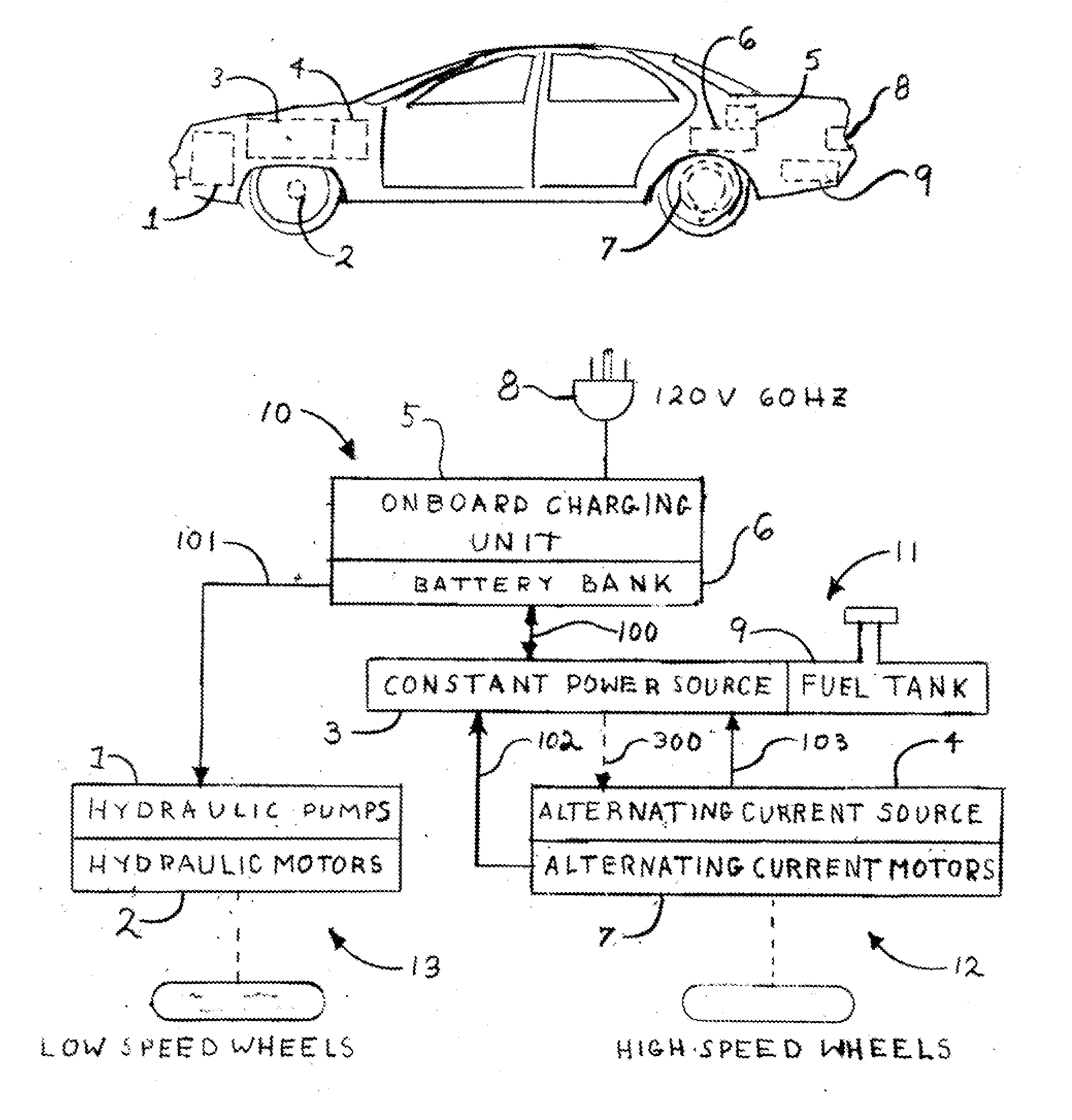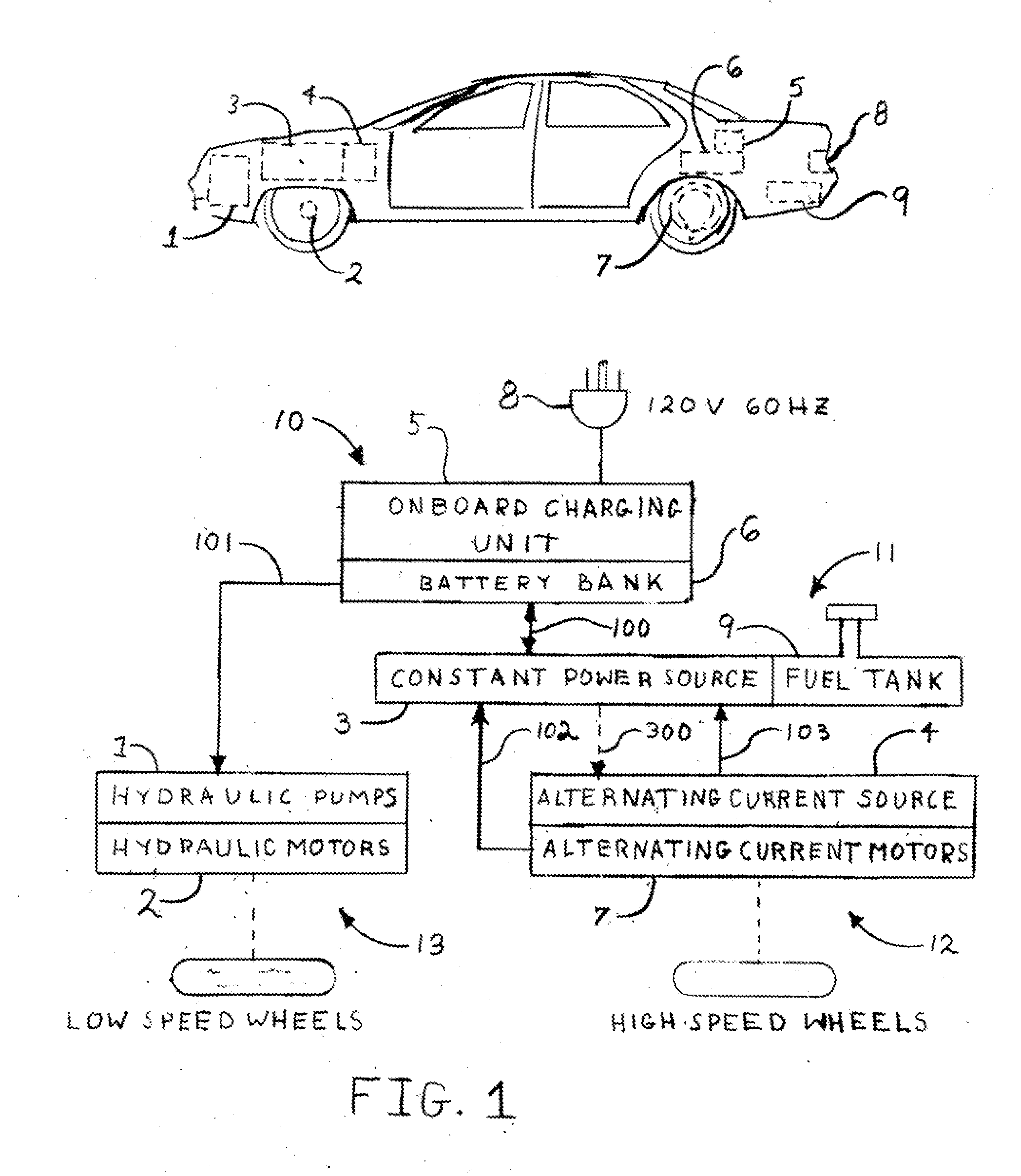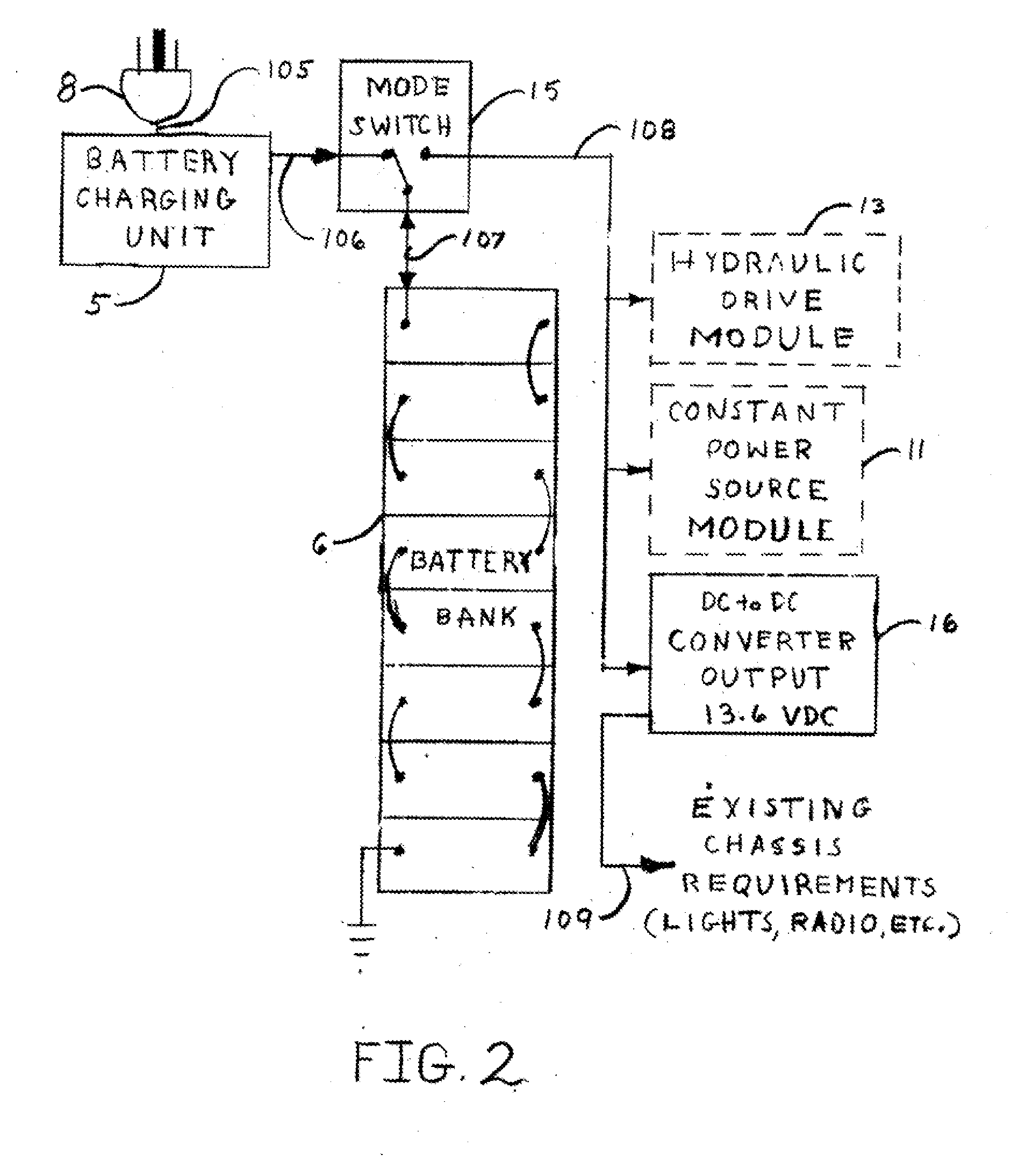Hibrid vehicle using a hydraulic drive for low speed and an electric drive for high speed.
- Summary
- Abstract
- Description
- Claims
- Application Information
AI Technical Summary
Benefits of technology
Problems solved by technology
Method used
Image
Examples
Embodiment Construction
[0026]The pictorial potion of FIG. 1 is a notional depiction of an existing chassis with the conventional front wheel drive system removed and the invented systems installed. The hydraulic motors 2 are mounted on the front wheels were the drive shafts were removed. The hydraulic pumps and controls 1 are located in the engine compartment forward of the front wheels. The constant power source 3 and the alternating current source 4 are located in the space vacated by the conventional combustion engine and transmission. The battery bank 6 and onboard charger 5 are located behind the rear seat. The alternating current motors 7 are located between the oversized tire rims and the brakes. The power receptacle 8, for externally charging the batteries, is located behind a spring loaded number plate bracket. The existing fuel tank 9 is used for liquid fuel applications but must be replaced for hydrogen. Again the pictorial is a notional arrangement to an existing chassis, the component locatio...
PUM
 Login to View More
Login to View More Abstract
Description
Claims
Application Information
 Login to View More
Login to View More - R&D
- Intellectual Property
- Life Sciences
- Materials
- Tech Scout
- Unparalleled Data Quality
- Higher Quality Content
- 60% Fewer Hallucinations
Browse by: Latest US Patents, China's latest patents, Technical Efficacy Thesaurus, Application Domain, Technology Topic, Popular Technical Reports.
© 2025 PatSnap. All rights reserved.Legal|Privacy policy|Modern Slavery Act Transparency Statement|Sitemap|About US| Contact US: help@patsnap.com



